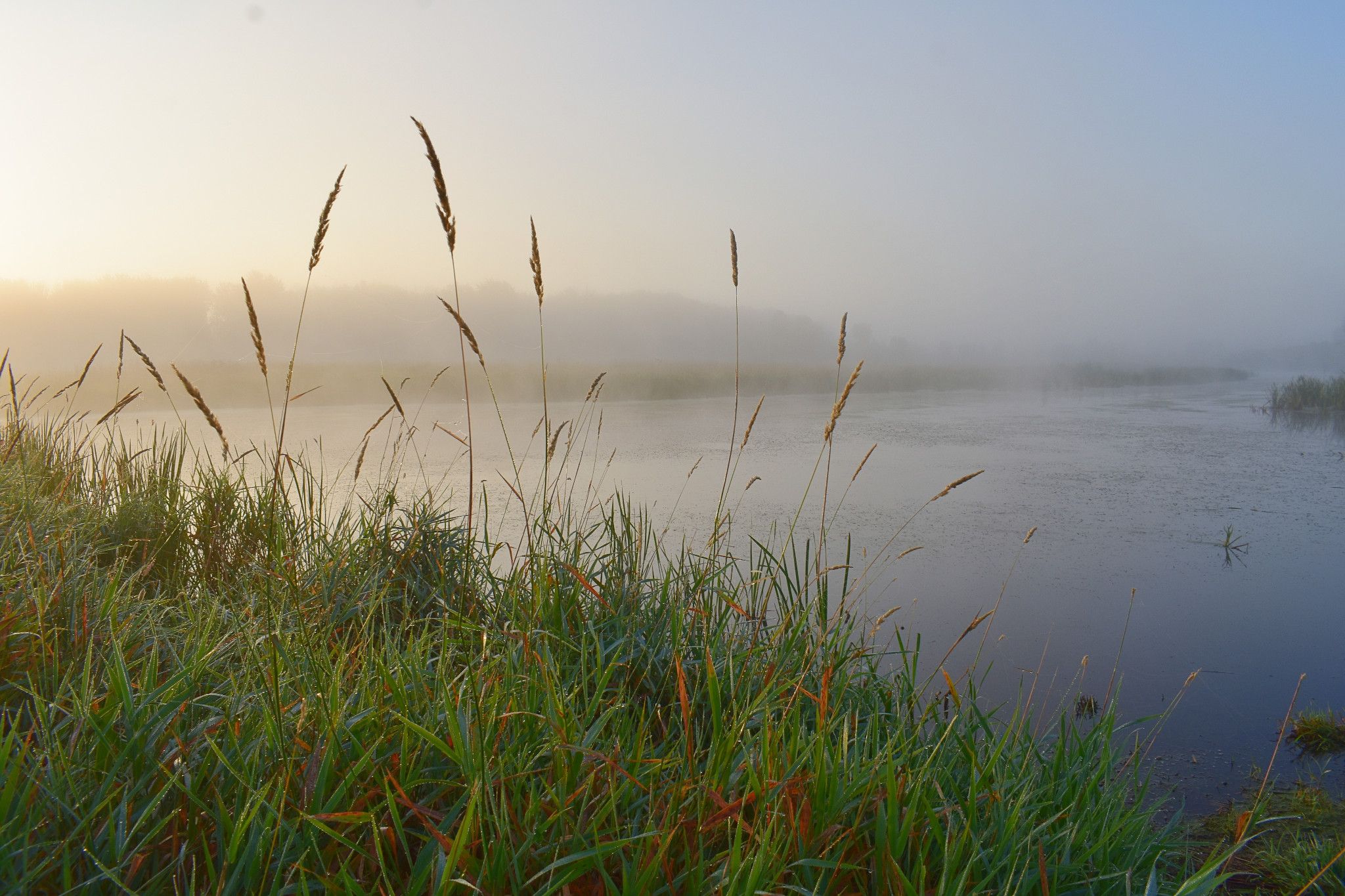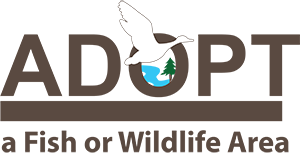Sheboygan Marsh Wildlife Area

Sheboygan Marsh Wildlife Area lies in northwestern Sheboygan County, just one mile west and north of Elkhart Lake. It covers over half of the townships of Russell and Greenbush. The area historically known as Sheboygan Marsh includes over 14,000 acres of land and surface water. It contains the largest restored wetland in the Wisconsin watersheds of Lakes, Michigan, and Superior.
Today, the Department of Natural Resources staff provides wildlife, fish, and forestry management of the 8,285-acre Sheboygan Marsh Wildlife Area. In addition to managing the 871 acres of state-owned lands, the DNR manages the 7,414 acres of county-owned lands by a formal management agreement executed with Sheboygan County in 1984.
The Sheboygan Marsh provides habitat for many different wildlife species. The main marsh and smaller wetland impoundments provide migratory stopover, breeding, and brood rearing habitat for numerous species of waterfowl and wetland birds. White cedar stands, bottomland hardwoods, dogwood, and alder thickets are commonly used by white-tailed deer, woodcock, squirrels, rabbits, and various furbearers. The prairies on the south side of the marsh provide habitat for grassland birds and are part of the stocked pheasant hunting program.
Common wildlife species found on this property are white-tailed deer, woodcock, wild turkey, squirrels, ring-necked pheasants (stocked), rabbits, and numerous waterfowl and shorebird species.
History
The formation of the marsh started as a large ice block, which melted and formed a kettle lake after the last glacial advance. After being a deep, open-water system for thousands of years, sedimentation eventually caused the lake to transform into a shallow-water marsh. Up to 50 feet of marl and peat is evidence that the glacial lake has been converted to a shallow-water marsh over the past 12,000 to 14,000 years.
Native American tribes that occupied the marsh as far back as 12,000 years ago include the Menominee, Chippewa and Potawatomi. The earliest European settlements in the area date back to the mid-1800s. In 1870, Sheboygan businessman John Bertschy bought approximately 6,000 acres of Sheboygan Marsh from the federal government, which acquired it from the Menominee Tribe in 1831. To drain the marsh for agricultural use, Bertschy dug ditches and removed the natural limestone dam to drain the marsh for agricultural use. However, this first attempt to drain the marsh failed, and Bertschy went bankrupt.
From 1912 to 1921, a second attempt to drain the marsh was fairly successful, with the digging of over 20 miles of ditches from 6 to 20 feet deep and over 60 feet wide. Due to low post-war prices and the high availability of farmland, the demand for this new "wilderness farmland" vanished. By 1927, restoration efforts to build a dam to restore the marsh to its natural water level and to nurture the habitat for waterfowl and other wildlife were led by Charles E. Broughton and the Sheboygan Chapter of the Izaak Walton League.
In 1937, the County purchased 6,349 acres of the marsh at a public foreclosure auction for $17,646. The current concrete dam was constructed under the federal Works Progress Administration in 1938. That same year, construction began on a campground, roadways, picnic shelters, concession stand, boat accesses, piers and a restaurant and tavern at the east end of the marsh adjacent to the dam site. This area and facilities are known as Broughton Sheboygan Marsh Park [exit DNR], managed separately from the current wildlife area by the Sheboygan County Planning Department [exit DNR].
Today, the Department of Natural Resources staff provides wildlife, fish and forestry management of the 8,166-acre Sheboygan Marsh Wildlife Area. In addition to managing the 752 acres of state-owned lands, the DNR manages the 7,414 acres of county-owned lands by a formal management agreement executed with Sheboygan County in 1984.
Management Objective
Historically, the area was a shallow-water marsh formed by a natural limestone dam in the Sheboygan River. The marsh water level dropped after the natural limestone dam was removed and drainage ditches were dug. Since constructing a man-made dam to restore the historic level of the natural dam, water levels have been managed by attempting to imitate the fluctuations and drawdowns of a natural shallow-water marsh system. Today, management activities on Sheboygan Marsh are directed at habitat improvements for nesting and migratory waterfowl, small and big game animals, grassland and forest wildlife, and the development of facilities for compatible outdoor recreational pursuits.
The wetlands are managed through drawdowns, prescribed burning, invasive species management and native vegetation seeding.
Lowland timber of northern white cedar, tamarack and hardwoods are managed through modern sustainable forestry practices using occasional selective-cut and salvage timber harvests.
Abandoned farm fields in the upland areas have been planted for prairie and grassland species. These fields are managed through prescribed burning, mowing and farming agreements.
A 1,522-acre waterfowl refuge is established on the southern end of the property to provide resting and feeding areas for migratory waterfowl. Waterfowl hunting in this refuge is prohibited at all times, and all entry is closed to all entry from Sept. 1 through Nov. 30.
Recreation
The Sheboygan Marsh Wildlife Area offers many recreational opportunities:
- Auto travel
- Birding (sandhill cranes, black-crowned night herons, American bitterns and black terns are found nesting throughout the emergent marsh areas, while the uplands of prairie and crop fields on the southeast side of the marsh provide nesting areas for bobolinks and other grassland birds, plus wintering grounds for numerous rough-legged hawks and an occasional short-eared owl)
- Canoeing (enjoyed on the 21 miles of river and channels of the marsh; canoes can be rented at the Marsh Lodge located at Broughton Sheboygan Marsh Park [exit DNR])
- Cross-country skiing (no designated trail)
- Fishing
- Hiking (no designated trail)
- Hunting (especially noted for deer, turkey, waterfowl, wild ring-necked pheasant [not stocked], rabbit, squirrel, ruffed grouse, woodcock, mourning dove, fox, coyote and raccoon)
- Snowmobiling (allowed on the county-wide trail system that passes through the property, as well as off-trail on the 21 miles of river and ditches within the marsh)
- Trapping
- Wild edibles/gathering
- Wildlife viewing
Amenities
- Bathroom - None
- Parking lot - There are eight parking areas
- Campground and size - None
- Trails, Types and Lengths - Mowed access trails used as hiking trails.
- Other amenities - County-owned boat launch
Unique Considerations
Sheboygan Marsh is located within the "Mid- to North Kettle Moraine" Conservation Opportunity Area of Wisconsin's Wildlife Action Plan. In this plan, the marsh is noted as having continental-wide ecological significance because of its complexes of uplands, wetlands and rivers, which include northern wet forest, southern mesic forest, shrub carr and emergent marsh. As noted in the plan, some of the Species of Greatest Conservation Need that are present here include Blanding's turtle, American woodcock, blue-winged teal, bobolink, least flycatcher, northern harrier and wood thrush. Sheboygan Marsh is also a Land Legacy Place.
Significant Native American mounds that mark summer and winter solstices on a property immediately north of the marsh. Recent archaeological investigations have classified Sheboygan Marsh as an "archaeological treasure" of national significance. It remains a candidate for nomination to the National Register of Historic Places.
Friends Group
Sheboygan Marsh is home to the Camp Y-Koda Outdoor Skills and Education Center [exit DNR], which is one of Wisconsin's pioneering and most successful outdoor education programs. The center provides a wide variety of hands-on outdoor skills training and education to more than 1,200 children from school districts throughout the area. The focus is on wetland ecology, plant and animal identification, canoeing, fishing and related outdoor skills and appreciation. Broughton Sheboygan Marsh Park [exit DNR] is the site of the tallest wooden observation tower in the state. The 80-foot structure is the result of efforts by Sheboygan County and the Friends of the Sheboygan Marsh [exit DNR], who have raised donations for the project. The Sheboygan County Conservation Association [exit DNR] has been a driving force for many years in helping to establish these and other outdoor education features, as well as helping to finance the management of the marsh.
Maps
Download [PDF] a map of this property.
If you want to explore this property further, you can access an interactive map.
Find out more about how to adopt this wildlife area.

